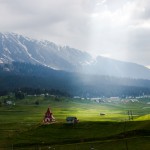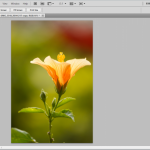Introduction
In today’s world, visual content speaks volumes, especially in media and advertising. It’s the bridge that connects brands with their diverse audiences, making representation through images more crucial than ever. With the rise of the digital age, stock photography has become a go-to resource for content creators. But, there’s a twist – the impact of diversity within these collections. Why is it so significant? Diverse stock photos are not just images; they paint a picture of inclusivity, showcasing the beauty of different cultures, identities, and backgrounds. They send a powerful message that everyone deserves to be seen and represented. This isn’t just about adding color to a webpage; it’s about creating content that mirrors the real, diverse world we live in. And, as we dive deeper into this topic, we’ll uncover the reasons why diversity in stock photography isn’t just beneficial – it’s essential for crafting truly inclusive content.
Importance of Diversity in Stock Photography
Representation Matters
In the vast expanse of digital and print media, every image is a narrative, a story told in the blink of an eye. It’s crucial that these stories reflect the rich tapestry of human experiences and backgrounds. Representation matters because it validates experiences, fosters a sense of belonging, and challenges stereotypes often perpetuated in media. When stock photography embraces diversity, it plays a pivotal role in promoting inclusivity. People from various ethnicities, cultures, abilities, ages, genders, and body types see themselves reflected in the world around them, not as outliers but as integral parts of society. This not only elevates societal acceptance but also nurtures individual self-esteem.
Changing Trends in Advertising
The landscape of advertising is constantly evolving, with brands now recognizing the importance of diversity and inclusion in their campaigns. This shift is not solely a moral or ethical move—it’s driven by consumer demand. Audiences are more likely to engage with advertisements that mirror the real-world mosaic of human diversity. They want stories that resonate with their lived experiences or introduce them to new perspectives in an authentic manner. As a result, companies are increasingly turning to diverse stock photography to ensure their messaging is relevant, embracing, and reflective of the world’s diversity. This evolution in advertising underscores a broader societal progress towards inclusivity and representation.
Benefits of Using Diverse Images in Content Creation
Capturing Global Audience
In today’s digital age, content has the power to cross oceans and break barriers at the click of a button. Hence, incorporating diverse images is crucial for capturing a global audience. When content creators use pictures that depict a wide range of experiences and identities, they communicate that their message is for everyone, regardless of where they come from or what they look like. This universal approach not only widens the potential audience reach but also fosters a global community of engaged followers and consumers. Diversity in imagery thus becomes an essential tool for tapping into new markets and connecting with a broader spectrum of people.
Enhancing Brand Image
Using diverse images in content creation significantly enhances a brand’s image. It signals to the world that the brand values diversity, inclusivity, and representation. This commitment can distinguish brands in a crowded market, fostering loyalty among current consumers while attracting new ones who place a high value on these principles. Moreover, brands that actively promote diversity are often viewed as leaders and changemakers, enhancing their reputation and setting them apart from competitors.
Creating Inclusive Spaces
Inclusion goes beyond just being represented; it’s about creating spaces where everyone feels welcomed, valued, and understood. By using diverse images, content creators can construct virtual environments that mirror the diverse world we live in. These inclusive spaces invite engagement and discussion, breaking down barriers and fostering a sense of community. They become safe havens where laying bare one’s vulnerabilities and sharing one’s victories are equally celebrated. Therefore, the intentional choice of diverse imagery is not merely an aesthetic decision but a profound step toward building inclusive platforms that champion every individual’s story.
Challenges in Finding Diverse Stock Photos
The quest for diverse stock photography to represent our vibrant, multifaceted world in media and advertising is often met with significant challenges. Two of the most notable obstacles include limited options and stereotypical representations. These challenges not only hinder the creative process but also impact the authenticity and relatability of content.
Limited Options
When searching for stock photos that accurately reflect the diversity of the human experience, content creators commonly encounter a discouraging lack of variety. This scarcity is most noticeable in terms of age, body type, ethnicity, and abilities. For instance, while trying to portray a realistic office environment, finding images of people with diverse backgrounds working together can be surprisingly difficult. Similarly, images that include individuals with disabilities or those that embrace various body types and age groups are not as readily available as one might hope. This limitation not only restricts the narrative power of content but also implicitly suggests a narrow interpretation of ‘normalcy’ that fails to represent the real world.
Stereotypical Representations
Another significant hurdle is the prevalence of stereotypical imagery. Stock photos often fall into the trap of clichéd and superficial portrayals, such as depicting technology professionals predominantly as young males or using women in antiquated, gendered roles. Such imagery not only perpetuates outdated stereotypes but also alienates audiences who do not see themselves accurately represented. The challenge lies not just in finding diverse imagery, but in ensuring that this diversity is depicted with depth, respect, and authenticity.
Strategies for Incorporating Diversity in Stock Photography
Addressing the limitations and stereotypes prevalent in stock photography requires deliberate action and creative strategies. By focusing on partnering with diverse photographers and using authentic imagery, content creators can contribute to a more inclusive and representative media landscape.
Partnering with Diverse Photographers
One effective approach is to collaborate directly with photographers from a wide range of backgrounds. By doing so, content creators can access a richer tapestry of perspectives and experiences, thereby ensuring a more genuine representation of diversity. Diverse photographers bring their unique understanding of culture, identity, and storytelling to their work, capturing images that resonate more deeply with a variety of audiences. Moreover, supporting photographers from underrepresented communities can help to elevate their voices and craft, contributing to a more equitable creative industry.
– Seek out photographers who are actively working to represent their communities.
– Establish partnerships with photography collectives focused on diversity.
– Provide platforms and opportunities for emerging talents from diverse backgrounds.
Using Authentic Imagery
Authenticity in imagery not only involves diverse representation but also the depiction of real-life scenarios and emotions. Moving beyond staged and artificial stock photos to use images that capture genuine moments can significantly enhance relatability and engagement. Utilizing user-generated content, for example, can offer a treasure trove of authentic and diverse visuals. Encouraging submissions from a broad audience or collaborating with influencers who embody diverse identities can also enrich your image library.
– Prioritize images that portray realistic and unedited bodies, faces, and environments.
– Include visuals that showcase a broad spectrum of experiences and emotions.
– Integrate user-generated content for a personal and relatable touch.
By addressing the challenges of limited options and stereotypical representations through strategic partnerships and a commitment to authenticity, content creators can significantly enrich the diversity of stock photography. This not only enhances the quality and inclusivity of media and advertising but also reflects a more accurate and respectful portrayal of the world’s rich tapestry of human experience.
Impact of Inclusive Content on Audience Engagement
The push towards inclusivity in content creation, particularly in stock photography, has transformed how audiences engage with media and advertising. The intentional integration of diversity in visual content does more than just tick a box; it invigorates audience engagement, deepens connections, and fosters a sense of belonging among viewers. Let’s delve into how inclusive content impacts audience engagement through case studies and social media trends.
Case Studies
One compelling case study is a global beauty brand that shifted to using diverse stock photography in its advertising campaigns. This move resulted in a notable increase in engagement on their social media platforms, with comments and shares doubling compared to previous content that lacked diversity. The brand reported a marked improvement in customer feedback, with many expressing a newfound sense of representation and connection to the brand.
Another case study comes from the publishing industry, where a magazine made a conscious decision to include diverse stock images in its articles and covers. The outcome was a substantial rise in subscription rates and an influx of positive press, highlighting the magazine’s commitment to representing its diverse readership. These cases underscore the direct correlation between inclusive content and increased audience engagement and loyalty.
Social Media Trends
Social media trends further illustrate the impact of inclusive content. Hashtags like DiverseStockPhotos and InclusiveMedia have gained traction, driving a movement towards broader representation in stock photography. User-generated content that embraces diversity tends to perform better, garnering more likes, shares, and comments. Influencers and brands that prioritize inclusivity in their posts report a more engaged and diverse following. This trend not only reflects a shift in audience preferences but also sets a new standard for how media is created and consumed. Through the lens of inclusivity, we see a brighter, more connected world where every image tells a story that resonates with a wide spectrum of viewers.
Conclusion
As we wrap up our exploration of diversity in stock photography, it’s clear that its impact on inclusive content creation is both profound and far-reaching. Including diverse visuals in media and advertising is not just about ticking boxes for representation. It’s about creating a world where everyone feels seen, heard, and valued. Diverse stock photography:
– Breaks down stereotypes and promotes understanding.
– Reflects the real world in its full spectrum of diversity.
– Empowers brands to connect with a wider audience on a deeper level.
By embracing and incorporating diverse imagery, content creators and brands can make a significant contribution to a more inclusive and equitable world. Remember, every image you choose sends a message. Let’s make sure it’s one of inclusivity, respect, and celebration of diversity. Together, we can shape a media landscape that truly represents the world in all its glorious diversity.












